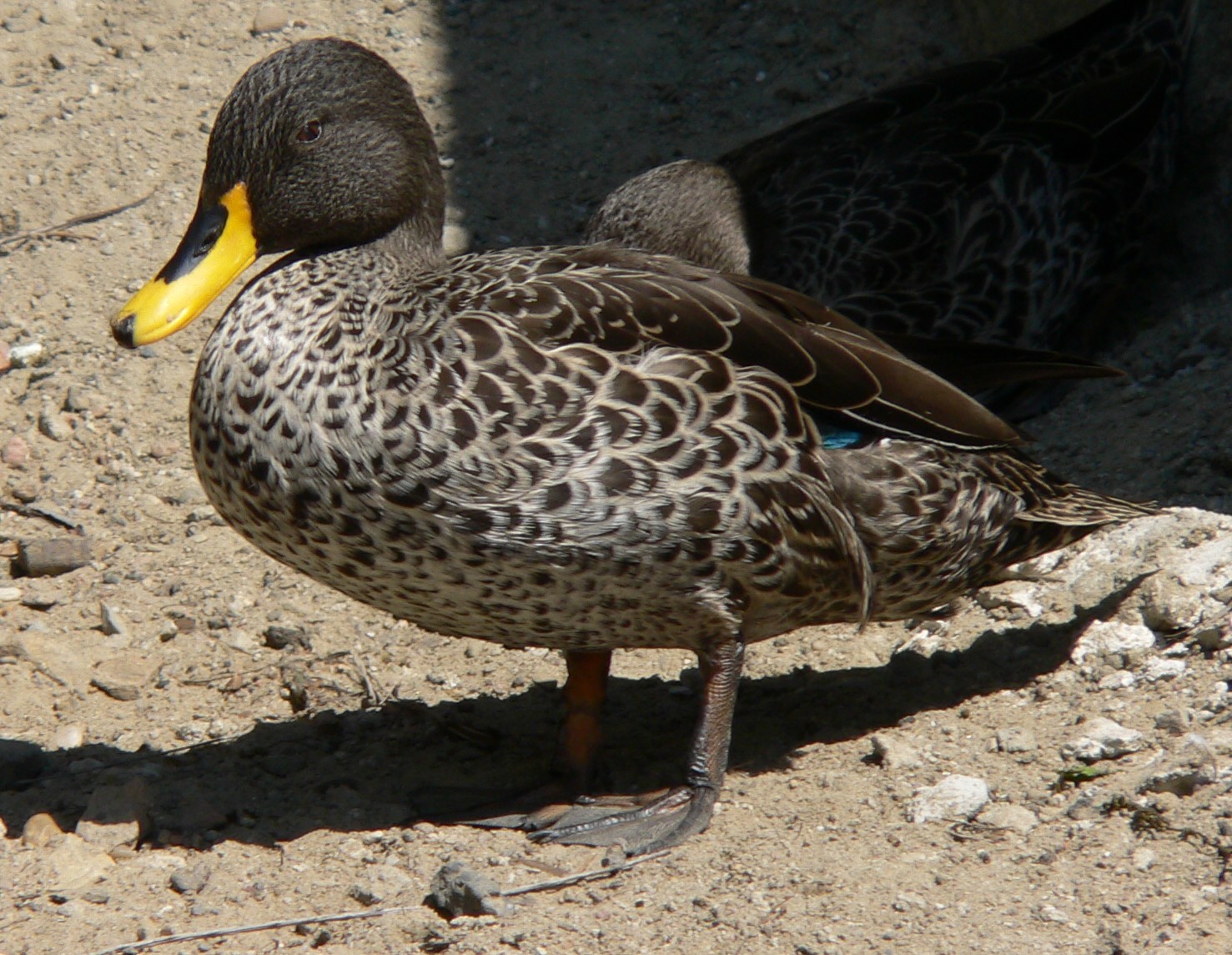
Yellow-billed duck(Anas undulata)
Phylum —chordata
Class — aves
Order — anseriformes
Family — anatidae
Genus –anas
Appearance
The yellow-billed duck is a 51–58 cm long dabbling duck.
These are mallard-sized mainly grey ducks with a darker head and bright yellow bill. The wings are whitish below, and from above show a white-bordered green speculum.
Sexes are similar, and juveniles are slightly duller than adults. The north-eastern race is darker and has a brighter bill and blue speculum.
Habitat
This species has an extremely large range and can be found in Angola, Botswana, Burundi, The Democratic Republic of the Congo, Ethiopia, Kenya, Malawi, Mozambique, Namibia, Rwanda, South Africa, Tanzania, Uganda, Zambia, and Zimbabwe.
Behavior
This duck is not migratory, but will wander in the dry season to find suitable waters.
It is highly gregarious outside the breeding season and forms large flocks.
Diet
Yellow-billed ducks are omnivorous, with a diet consisting of the fruits, seeds, roots, leaves and stems of aquatic and terrestrial plants, aquatic insects and their larvae, crustaceans, mollusks, and agricultural grains such as maize and sunflower seeds.
Reproduction
Yellow-billed ducks usually nest near water - on the ground in dense vegetation.
The average clutch consists of six and twelve eggs. The duration of the incubation period is 25-26 days.
In captivity
The average lifespan in captivity is 20-25 years.
Birds are friendly by their nature. They get along well with other species. It is easy to care for them in captivity.
Shelter is required in winter. Shelters must be provided with a cover. It is important for ducks to have water on their territory. The reservoir may be shallow (no more than two feet deep). For one pair of ducks, it is recommended to set the reservoir aside from 50 to 100 square meters, depending on the size of the birds.
The diet should adhere to the standard diet of teals: aquatic plants, small crustaceans, insects.The diet for birds is based on wheat and bread. Grains are perfect as a source of calcium for breeding.
These ducks tend to hybridize, particularly with closely related species that must be kept separately from each other.
 Russian
Russian
 English
English
























